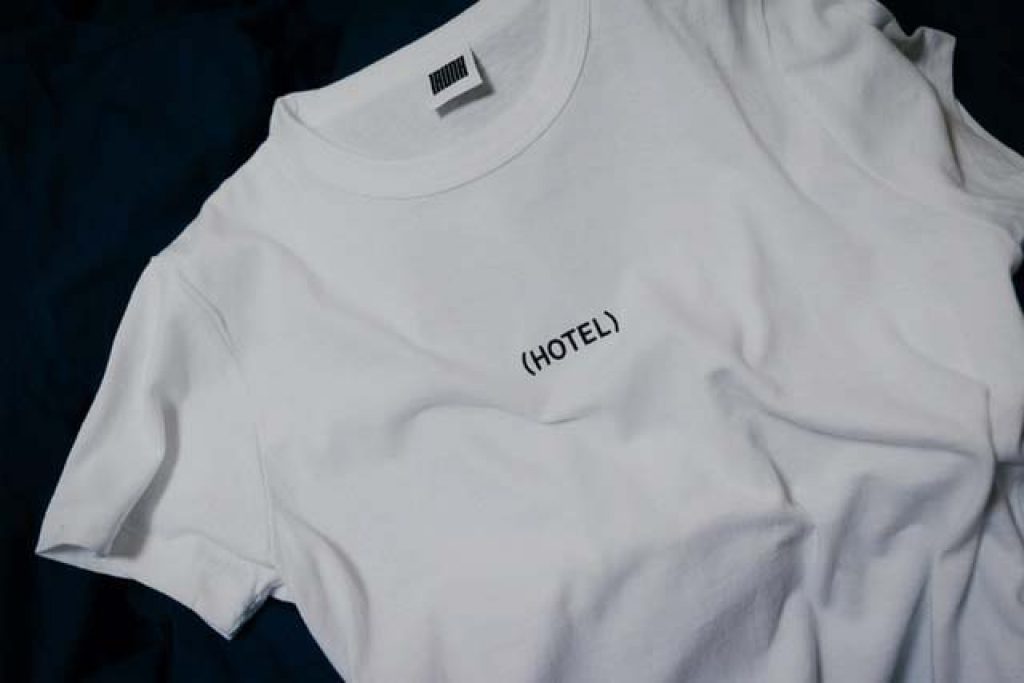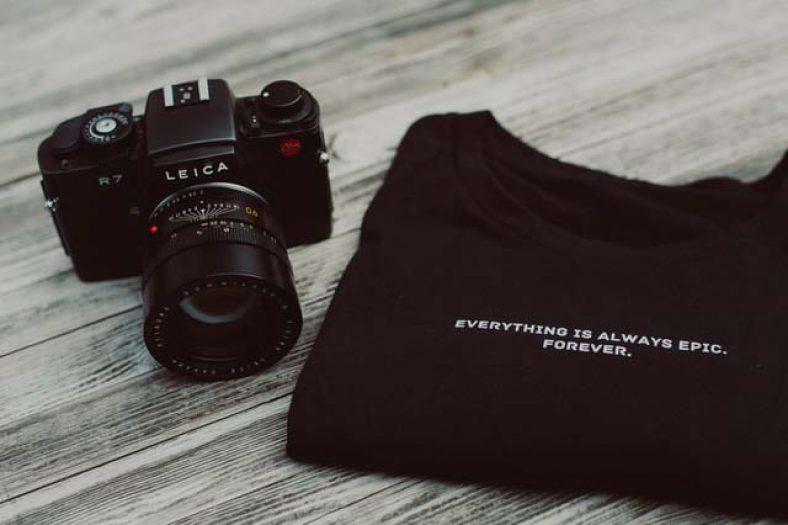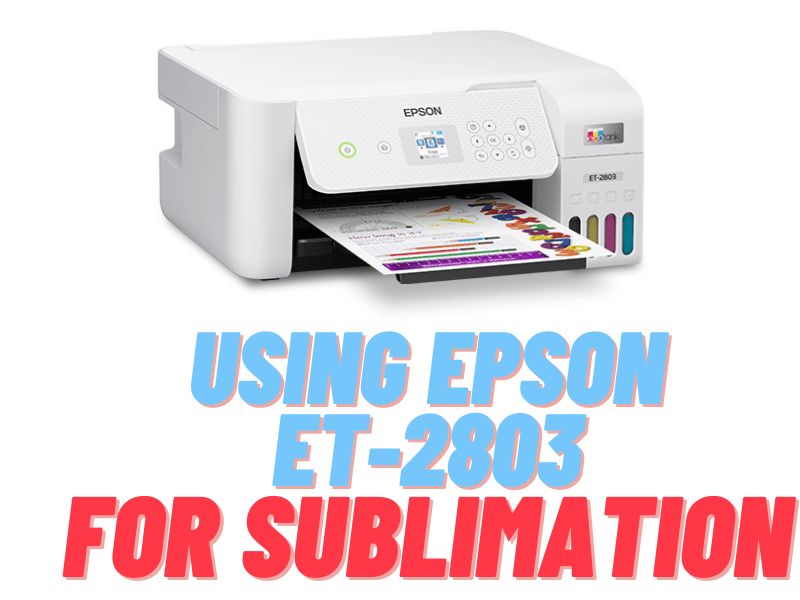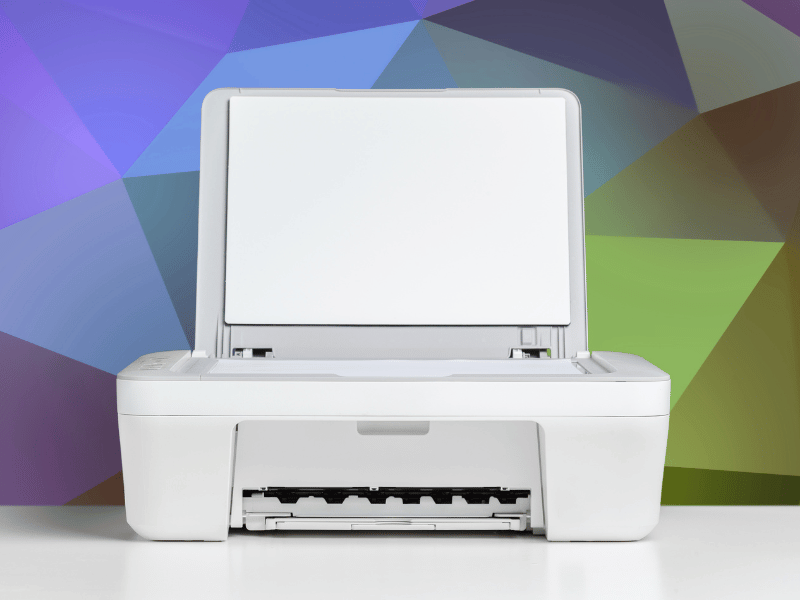What is Dye Sublimation?
Before knowing the difference between Dye Sublimation and Direct to Garment, we must know that Dye-sublimation is a technique that uses heat and pressure to apply an image to a certain material. It’s a very beneficial form of printing, since it allows the placement of several bright colors in their best resolution at the same time. In addition to being a technique that leaves high quality and long-lasting results, because the ink is embedded in the fibers of a garment. So the design isn’t simply placed on the garment, it becomes part of it.
This process begins with printing on a sheet of paper with certain special characteristics. Said paper contains the design or image that you want to sublimate on the fiber. With a machine that emits heat at a certain temperature, pressure is applied to the sheet of paper on the fabric. The design ink is then heated and disintegrates on the fabric to capture the design.
This is how the ink adheres to the fibers, and not just superimposed on it like a label. And it’s also this process that allows this technique to have such a variety of colors and design possibilities. With basically a process that’s based on hot pressing that combines a certain amount of time, temperature and a certain pressure.
Likewise, let us also take into account that the dyes used in this technique must have certain characteristics. If we speak in more technical terms, they must have a molecular composition that allows them to activate at 350 degrees Fahrenheit. Although the most vivid colors are obtained with 420 Fahrenheit.
Dye Sublimation Advantages:
Let’s take a brief look at the advantages that dye sublimation brings us, although you may have already drawn your own conclusions from the information we’ve already given you.
- First of all, it’s a flexible printing method. It can be used on various supports such as cups, plates, fibers and others.
- It’s a very simple technique and anyone can do it.
- Makes it possible to print thousands of different colors using CMYK process.
- It’s a relatively inexpensive printing option.
Dye Sublimation Disadvantages:
Not everything is always rosy, so let’s see what the bad side of dye sublimation.
- When sublimating in fabrics, they must have at least 70% polyester in their composition.
- Other materials to sublimate must also have a special polyester coating.
- All materials must have a white or light background.
- The print size is often limited, as it should be based on the size of the print plate and print paper.
What is Direct to Garment (DTG)?

These acronyms stand for Direct To Garnet, which is also a relatively new printing technique. It has hardly become popular since 2005 for its costs. Only a few garments or items use this method, because until not long ago it was not a viable alternative. On the other hand, this method consists in that the ink is printed directly on the article, as its name indicates.
Then, the ink enters the fibers becoming part of them. So, to the touch, the design isn’t felt and it looks like it has been on the fabric for its entire existence. Because it uses a liquid inkjet technology with a special printer. The inks of this technique are water-based, so it’s also an ecological method. These inks penetrate with the pressure and heat of the printer into the selected fibers.
As far as the design is concerned, this is done on a design platform and exported to the printer digitally. On the other hand, it’s very important that the garments are pretreated first. Since this will allow the inks to adhere completely. Which will give better results, especially to garments that are of other colors.
The design is printed fairly accurately and of high quality in no time. Without any limitation of colors or shapes. All colors are printed at the same time and in high definition, which makes it a fairly efficient method. Not to mention that it’s also very easy to use and is a technique that can replace other forms of printing.
DTG Advantages:
This technique, like others, offers a number of pros and cons. But now let’s see what makes DTG superior over other methods and why you should give it a try for your impressions.
- Allows a wide variety of colors.
- You can use large and varied designs.
- It does not take much time on unique pieces.
- It is a technique with high quality results.
- Works on different colored garments.
- It is ideal for printing a few pieces.
- Eco-friendly ink that leaves a fairly clean result with less ink.
DTG Disadvantages:
On the other hand, let’s know the limitations that this technique has, and the reasons why some people do not usually use DTG.
- Limited to cotton, bamboo, linen and hemp materials.
- DTG printers are often very expensive.
- It is expensive when it comes to printing at volume.
- You need a pre-treatment process.
- The ink is quite delicate to use.
Difference between Dye Sublimation and Direct to Garment:
Now that we’ve seen the advantages and disadvantages of these two techniques, we can know what the differences are between Dye Sublimation and Direct to Garment. Clearly, they’re methods for printing on textiles, but they can also be used on other materials. Both rely on pressure and heat to print designs. But there are some nice differences between these two.
Although dye sublimation can deliver a large number of colors using the CMYK process, DTG allows a similar number of colors in high resolution. Print quality with DTG is much higher and detailed, as well as more durable and eco-friendly. However, the costs of sublimation are much lower than DGT.
So sublimation is ideal when it comes to making multiple pieces at high volume. Whereas, if you prefer quality over quantity, then the DTG is the ideal choice for you. On the other hand, for newbies sublimation is best thanks to its big eases. DTG is also a simple process, but it requires other skills.
Finally, DTG is superior when it comes to prints in base colors other than white. While sublimation only supports materials in light or white colors. So these are the main differences between Dye Sublimation and Direct to Garment methods and their big features.




